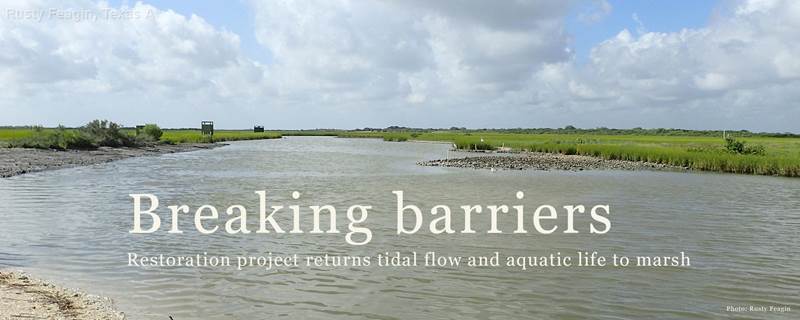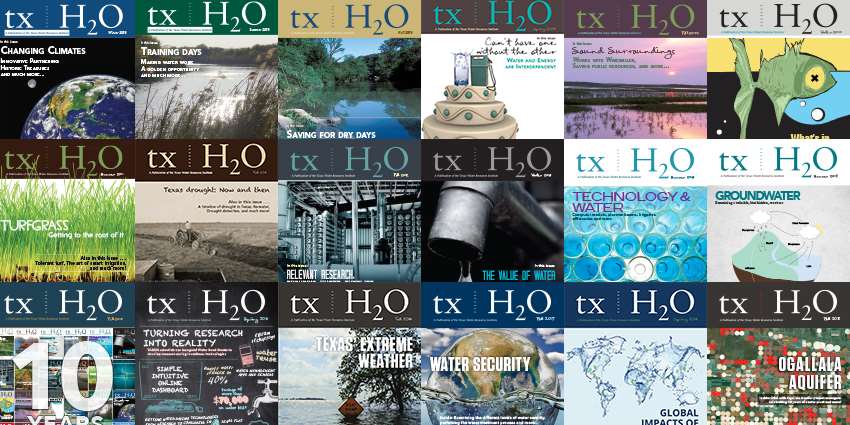This month’s txH2O highlight focuses on a Texas wetland restoration project. The saltwater marsh, known as Magic Ridge Marsh in Magnolia Beach, Texas, covers roughly 14 square miles, stretching from Magnolia Beach to Indianola in Calhoun County.
These wetlands connect to Matagorda Bay, but blocked tidal flow caused steady degradation to Magic Ridge Marsh, leading to large vegetative and ecosystem losses over time.
The northern and southern inlets to the marsh were being blocked by manmade barriers—remnants of berms and roads built by immigrants who landed on Magnolia Beach and migrated to Central Texas in the early 1800s, according to Dr. Rusty Feagin, coastal scientist in Texas A&M University’s Department of Ecosystem Science and Management.
The additional buildup of oysters growing and dying on the structures further obstructed the inlets, and the barriers acted like small dams, Feagin said, preventing water from flowing into the marsh.
“The water leaves, but the salt stays, and it just gets more and more salty,” Feagin said. “Even if you bring more tidal water in and you block it up again, over time you’re just making it hypersaline.”
Over the years, blocked channels and stagnant, salty waters caused the marsh to degrade.
Read more about the return of the tide and successful restoration of Magic Ridge Marsh in the full article, Breaking Barriers.


